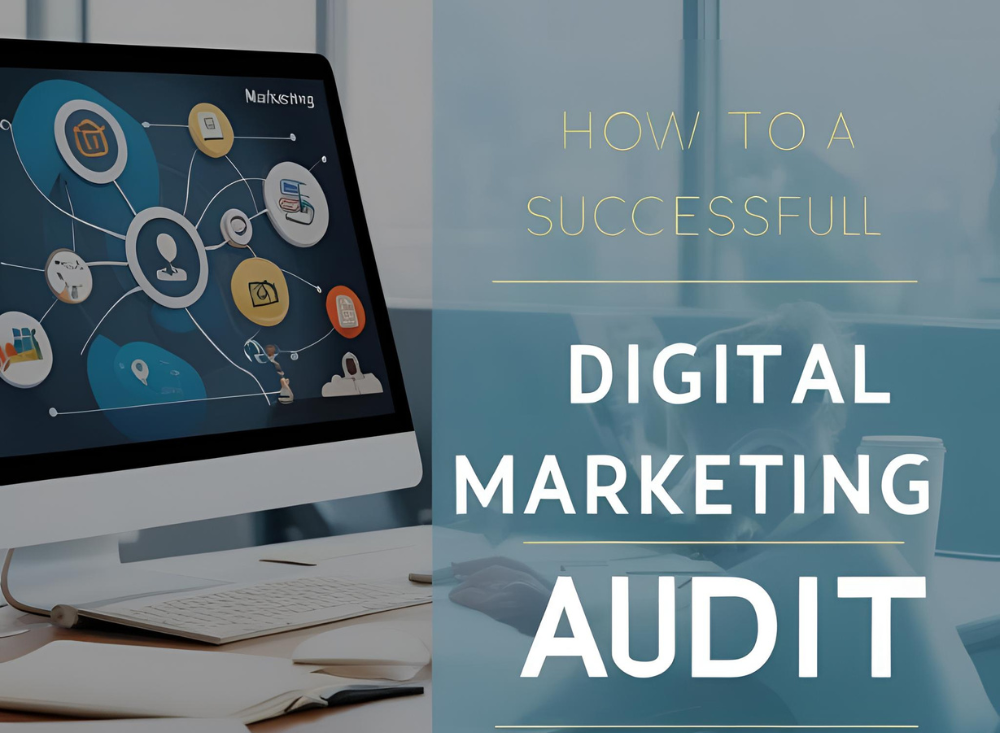
In today’s fast-evolving digital landscape, brands must consistently evaluate the effectiveness of their online strategies. That’s where a digital marketing audit comes into play. Whether you manage marketing in-house or through an agency, a well-executed audit reveals what’s working, what’s failing, and where you need to pivot.
A comprehensive digital marketing audit helps identify performance gaps, align efforts with business goals, and uncover untapped opportunities. Let’s explore what a digital audit is, its benefits, and how you can conduct one step by step.
? What Is a Digital Marketing Audit?
A digital marketing audit is a systematic review and analysis of all your online marketing efforts — including SEO, content, paid ads, social media, website performance, and analytics. It involves assessing each channel’s effectiveness, consistency, and alignment with your overall strategy.
Think of it as a full-body check-up for your brand’s digital health.
? What Are the Benefits of a Digital Audit?
Conducting regular digital audits provides several advantages:
- ✅ Improved ROI — Optimize underperforming channels and campaigns
- ✅ Clearer Strategy — Align digital tactics with business objectives
- ✅ Data-Driven Decisions — Use performance metrics to shape future strategies
- ✅ Competitive Edge — Identify market gaps and position your brand better
- ✅ Consistent Branding — Ensure messaging and design are aligned across all touchpoints
- ✅ Better User Experience — Optimize UX, load speeds, and conversion paths
? What Does a Digital Audit Examine?
A digital marketing audit reviews both qualitative and quantitative aspects of your digital presence, including:
- Website structure and health
- Organic search visibility (SEO)
- Content quality and performance
- Paid advertising campaigns (PPC)
- Social media strategy and engagement
- Analytics setup and data integrity
- Conversion rates and customer journey
- Competitor benchmarks
? What’s Included in a Digital Marketing Audit?
An effective audit typically covers the following core areas:
- Website & technical performance
- Content marketing review
- Search engine optimization (SEO)
- Social media marketing
- Paid digital advertising
- Analytics, conversions, and KPIs
Let’s break each one down.
?️ 1. Website & Technical Audit
Your website is the foundation of your digital presence. A poor user experience or technical issues can sabotage even the best campaigns.
What to check:
- Mobile-friendliness and responsiveness
- Site speed and loading times (use tools like Google PageSpeed Insights)
- Broken links or 404 errors
- Secure HTTPS protocol
- XML sitemap & robots.txt
- Navigation and usability
Tools:
- Screaming Frog
- GTmetrix
- Google Search Console
- Core Web Vitals
✍ 2. Content Audit
Content fuels most of your digital marketing efforts — from SEO and social media to lead nurturing.
What to check:
- Relevance and accuracy of blog posts, landing pages, etc.
- Search intent alignment (informational vs transactional)
- Keyword optimization
- Content freshness and updates
- Engagement metrics — bounce rate, time on page, shares
- Visual content — image quality, alt tags, video usage
Tools:
- Google Analytics
- Ahrefs Content Explorer
- Yoast SEO (for WordPress sites)
? 3. SEO Audit
Search Engine Optimization ensures your content can be discovered organically. A detailed SEO audit covers:
What to check:
- Keyword rankings and opportunities
- Meta tags and descriptions
- Internal linking
- Backlink profile
- On-page optimization (H1s, image alt text, keyword usage)
- Technical SEO — schema markup, crawl errors, index status
Tools:
- Semrush
- Ahrefs
- Moz
- Google Search Console
? 4. Social Media Audit
Your brand’s voice and reputation are shaped on social platforms. Analyze how effectively your social media supports your overall strategy.
What to check:
- Audience engagement (likes, comments, shares)
- Content consistency and branding
- Post frequency and timing
- Follower growth rate
- Top-performing content
- Paid vs organic reach
- Use of features (Stories, Reels, Polls, etc.)
Tools:
- Meta Business Suite
- LinkedIn Analytics
- Hootsuite
- Sprout Social
? 5. Digital Advertising Audit
Paid ads provide quick visibility and traffic, but without regular audits, you risk wasting budget.
What to check:
- Campaign structure and segmentation
- Target audience accuracy
- Ad creatives and copy
- Quality Score (for Google Ads)
- ROAS (Return on Ad Spend)
- Conversion tracking setup
- A/B testing results
Platforms:
- Google Ads
- Facebook/Instagram Ads Manager
- LinkedIn Ads
- Google Tag Manager
? 6. Analytics & Performance Audit
Finally, a digital audit is incomplete without evaluating your data. This ensures you’re tracking the right KPIs and attributing results correctly.
What to check:
- Google Analytics setup (GA4)
- Conversion goals and event tracking
- Traffic sources breakdown
- User behavior (session duration, bounce rate)
- Multi-channel funnels and attribution
- CRM integration (if any)
- Custom dashboards or reports
Tools:
- Google Analytics
- Google Tag Manager
- Looker Studio
- HubSpot / CRM
- ✅ Conclusion: Turn Insights Into Action
A successful digital marketing audit isn’t just about finding issues — it’s about using those insights to refine your strategy and drive results. Once the audit is complete:
- Prioritize findings based on impact and urgency
- Set measurable goals for improvement
- Delegate tasks to your team or agency partners
- Monitor changes over time and adjust accordingly
Whether you’re a startup or an established business, conducting a digital marketing audit every 6–12 months keeps your strategy aligned, agile, and performance-driven.